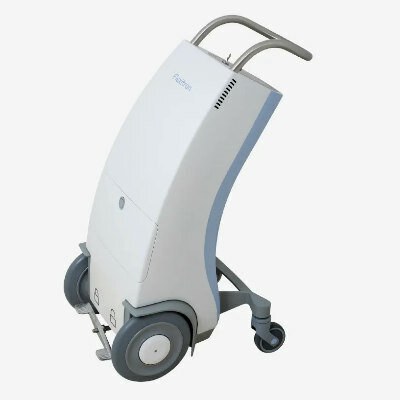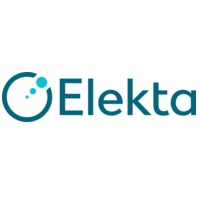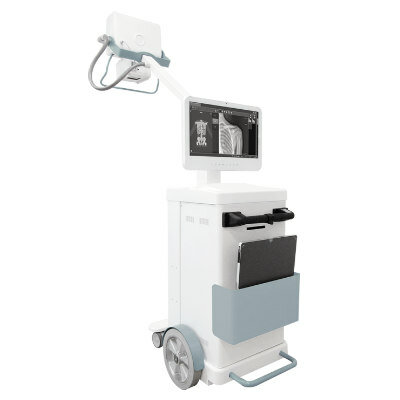Blood Sample May Establish Patient Radiosensitivity
|
By MedImaging International staff writers Posted on 25 Oct 2017 |
A new study suggests that flow cytometry analysis can be used to measure a patient’s DNA sensitivity to radiation and chemotherapy treatments.
Under development at Sahlgrenska Academy (Göteborg, Sweden), the flow-cytometry-based cell division (CD) assay uses the thymidine analogue 5-ethynyl-2’-deoxyuridine (EdU) to measure the proliferative ability of cells after DNA damaging treatment. In validation studies, the CD assay measured sensitivity to radiation of human skin fibroblasts with a correlation similar to standard clonogenic survival assay, and in a relatively short time frame. Using easily sampled peripheral blood lymphocytes, the CD assay was able to identify variation in intrinsic sensitivity to radiation, and also detected increased sensitivity in patients with DNA repair defects.
As exposure to ionizing radiation generates free radicals that carry out most part of the toxic effects, the researchers conducted a second study to examine if pretreating cells with an Nrf2 transcription factor activator, which regulates the cellular antioxidant system, could influence sensitivity to radiation. The results showed that repeated pretreatment of cells with Nrf2 activators, isothiocyanate sulforaphane, or synthetic triterpenoid bardoxolone methyl can enhance cytoprotection. The study was presented as a PhD dissertation in September 2017.
“The main idea behind our method is to measure patient sensitivity during the planning process for the cancer treatment and to identify which patients are extremely sensitive,” study dissertation presenter Sherin Mathew, PhD. “It will be better to have this knowledge about the patients; as it stands right now we don't know how each patient will respond when the radiation or chemotherapy is administered. The idea is that it will be possible to test sensitivity and prevent extremely sensitive patients from having serious side effects.”
Flow cytometry is a biophysical technology employed in cell counting, cell sorting, biomarker detection, and protein engineering by suspending cells in a stream of fluid and passing them through an electronic laser or impedance-based detection apparatus that allows simultaneous multiparametric analysis of the physical and chemical characteristics of up to thousands of particles per second. Flow cytometry is routinely used in the diagnosis of health disorders, especially blood cancers, but has other applications in basic research, clinical practice, and clinical trials.
Related Links:
Sahlgrenska Academy
Under development at Sahlgrenska Academy (Göteborg, Sweden), the flow-cytometry-based cell division (CD) assay uses the thymidine analogue 5-ethynyl-2’-deoxyuridine (EdU) to measure the proliferative ability of cells after DNA damaging treatment. In validation studies, the CD assay measured sensitivity to radiation of human skin fibroblasts with a correlation similar to standard clonogenic survival assay, and in a relatively short time frame. Using easily sampled peripheral blood lymphocytes, the CD assay was able to identify variation in intrinsic sensitivity to radiation, and also detected increased sensitivity in patients with DNA repair defects.
As exposure to ionizing radiation generates free radicals that carry out most part of the toxic effects, the researchers conducted a second study to examine if pretreating cells with an Nrf2 transcription factor activator, which regulates the cellular antioxidant system, could influence sensitivity to radiation. The results showed that repeated pretreatment of cells with Nrf2 activators, isothiocyanate sulforaphane, or synthetic triterpenoid bardoxolone methyl can enhance cytoprotection. The study was presented as a PhD dissertation in September 2017.
“The main idea behind our method is to measure patient sensitivity during the planning process for the cancer treatment and to identify which patients are extremely sensitive,” study dissertation presenter Sherin Mathew, PhD. “It will be better to have this knowledge about the patients; as it stands right now we don't know how each patient will respond when the radiation or chemotherapy is administered. The idea is that it will be possible to test sensitivity and prevent extremely sensitive patients from having serious side effects.”
Flow cytometry is a biophysical technology employed in cell counting, cell sorting, biomarker detection, and protein engineering by suspending cells in a stream of fluid and passing them through an electronic laser or impedance-based detection apparatus that allows simultaneous multiparametric analysis of the physical and chemical characteristics of up to thousands of particles per second. Flow cytometry is routinely used in the diagnosis of health disorders, especially blood cancers, but has other applications in basic research, clinical practice, and clinical trials.
Related Links:
Sahlgrenska Academy
Latest Nuclear Medicine News
- New SPECT/CT Technique Could Change Imaging Practices and Increase Patient Access
- New Radiotheranostic System Detects and Treats Ovarian Cancer Noninvasively
- AI System Automatically and Reliably Detects Cardiac Amyloidosis Using Scintigraphy Imaging
- Early 30-Minute Dynamic FDG-PET Acquisition Could Halve Lung Scan Times
- New Method for Triggering and Imaging Seizures to Help Guide Epilepsy Surgery
- Radioguided Surgery Accurately Detects and Removes Metastatic Lymph Nodes in Prostate Cancer Patients
- New PET Tracer Detects Inflammatory Arthritis Before Symptoms Appear
- Novel PET Tracer Enhances Lesion Detection in Medullary Thyroid Cancer
- Targeted Therapy Delivers Radiation Directly To Cells in Hard-To-Treat Cancers
- New PET Tracer Noninvasively Identifies Cancer Gene Mutation for More Precise Diagnosis
- Algorithm Predicts Prostate Cancer Recurrence in Patients Treated by Radiation Therapy
- Novel PET Imaging Tracer Noninvasively Identifies Cancer Gene Mutation for More Precise Diagnosis
- Ultrafast Laser Technology to Improve Cancer Treatment
- Low-Dose Radiation Therapy Demonstrates Potential for Treatment of Heart Failure
- New PET Radiotracer Aids Early, Noninvasive Detection of Inflammatory Bowel Disease
- Combining Amino Acid PET and MRI Imaging to Help Treat Aggressive Brain Tumors
Channels
Radiography
view channel
Novel Breast Imaging System Proves As Effective As Mammography
Breast cancer remains the most frequently diagnosed cancer among women. It is projected that one in eight women will be diagnosed with breast cancer during her lifetime, and one in 42 women who turn 50... Read more
AI Assistance Improves Breast-Cancer Screening by Reducing False Positives
Radiologists typically detect one case of cancer for every 200 mammograms reviewed. However, these evaluations often result in false positives, leading to unnecessary patient recalls for additional testing,... Read moreMRI
view channel
PET/MRI Improves Diagnostic Accuracy for Prostate Cancer Patients
The Prostate Imaging Reporting and Data System (PI-RADS) is a five-point scale to assess potential prostate cancer in MR images. PI-RADS category 3 which offers an unclear suggestion of clinically significant... Read more
Next Generation MR-Guided Focused Ultrasound Ushers In Future of Incisionless Neurosurgery
Essential tremor, often called familial, idiopathic, or benign tremor, leads to uncontrollable shaking that significantly affects a person’s life. When traditional medications do not alleviate symptoms,... Read more
Two-Part MRI Scan Detects Prostate Cancer More Quickly without Compromising Diagnostic Quality
Prostate cancer ranks as the most prevalent cancer among men. Over the last decade, the introduction of MRI scans has significantly transformed the diagnosis process, marking the most substantial advancement... Read moreUltrasound
view channel
Deep Learning Advances Super-Resolution Ultrasound Imaging
Ultrasound localization microscopy (ULM) is an advanced imaging technique that offers high-resolution visualization of microvascular structures. It employs microbubbles, FDA-approved contrast agents, injected... Read more
Novel Ultrasound-Launched Targeted Nanoparticle Eliminates Biofilm and Bacterial Infection
Biofilms, formed by bacteria aggregating into dense communities for protection against harsh environmental conditions, are a significant contributor to various infectious diseases. Biofilms frequently... Read moreGeneral/Advanced Imaging
view channel
New AI Method Captures Uncertainty in Medical Images
In the field of biomedicine, segmentation is the process of annotating pixels from an important structure in medical images, such as organs or cells. Artificial Intelligence (AI) models are utilized to... Read more.jpg)
CT Coronary Angiography Reduces Need for Invasive Tests to Diagnose Coronary Artery Disease
Coronary artery disease (CAD), one of the leading causes of death worldwide, involves the narrowing of coronary arteries due to atherosclerosis, resulting in insufficient blood flow to the heart muscle.... Read more
Novel Blood Test Could Reduce Need for PET Imaging of Patients with Alzheimer’s
Alzheimer's disease (AD), a condition marked by cognitive decline and the presence of beta-amyloid (Aβ) plaques and neurofibrillary tangles in the brain, poses diagnostic challenges. Amyloid positron emission... Read more.jpg)
CT-Based Deep Learning Algorithm Accurately Differentiates Benign From Malignant Vertebral Fractures
The rise in the aging population is expected to result in a corresponding increase in the prevalence of vertebral fractures which can cause back pain or neurologic compromise, leading to impaired function... Read moreImaging IT
view channel
New Google Cloud Medical Imaging Suite Makes Imaging Healthcare Data More Accessible
Medical imaging is a critical tool used to diagnose patients, and there are billions of medical images scanned globally each year. Imaging data accounts for about 90% of all healthcare data1 and, until... Read more
Global AI in Medical Diagnostics Market to Be Driven by Demand for Image Recognition in Radiology
The global artificial intelligence (AI) in medical diagnostics market is expanding with early disease detection being one of its key applications and image recognition becoming a compelling consumer proposition... Read moreIndustry News
view channel
Bayer and Google Partner on New AI Product for Radiologists
Medical imaging data comprises around 90% of all healthcare data, and it is a highly complex and rich clinical data modality and serves as a vital tool for diagnosing patients. Each year, billions of medical... Read more





















